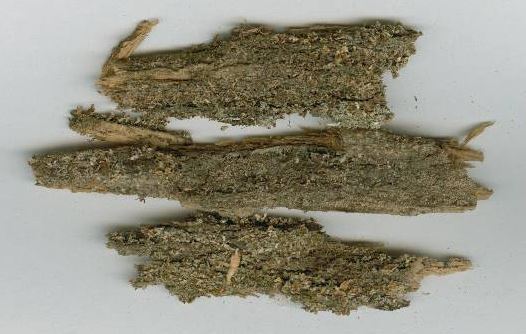Arthonia digitatae Hafellner
Linzer biol. Beitr., 31: 508, 1999.
Synonyms:
Distribution: C - Tosc (Brackel 2015, 2016).
Description: Thallus inapparent, not lichenized, developing on the thalli of red-fruited Cladonia-species, where it forms discoloured to red-brown patches. Apothecia arthonioid, immarginate, black to brown-black, epruinose, flat to convex, irregularly rounded and 0.1-0.2 mm wide, or elongated and 70-330 μm long, dispersed to aggregated, sometimes confluent. Proper exciple very poorly developed; epithecium medium to dark olive-brown, sometimes with scattered granules, 5-10 μm high; hymenium colourless to brownish, 25-45 μm high, I+ red, K/I+ blue; paraphysoids 1.5-3 μm thick, flexuous, branched, the apical cells up to 6 μm wide, sometimes with a dark brown cap; hypothecium colourless to pale brown, 15-50 μm high. Asci 8-spored, broadly clavate, semi-fissitunicate, with a large apical dome, a distinct ocular chamber, and an amyloid ring-structure in tholus, Arthonia-type. Ascospores 1-septate, not or only slightly constricted at septum, hyaline, narrowly clavate, with one cell wider and sometimes shorter than the other, (8-)10‒13(-17) x (3)4-5(-6.5) μm, smooth-walled, sometimes with a 0.5-1 μm thick, gelatinous perispore. Photobiont absent. Spot tests: thallus K-, C-, KC-, P-, UV-. Chemistry: without lichen substances. Note: a lichenicolous fungus growing on red-fruited Cladonia-species; the sample from Tuscany was collected on C. polydactyla.
Growth form: Lichenicolous fungus
Substrata: lignum, soil, terricolous mosses, and plant debris
Reproductive strategy: mainly sexual
paras Cladonia spp.
Commonnes-rarity: (info)
Alpine belt: absent
Subalpine belt: absent
Oromediterranean belt: absent
Montane belt: very rare
Submediterranean belt: absent
Padanian area: absent
Humid submediterranean belt: extremely rare
Humid mediterranean belt: absent
Dry mediterranean belt: absent

Predictive model
Herbarium samples
Growth form: Lichenicolous fungus
Substrata: lignum, soil, terricolous mosses, and plant debris
Reproductive strategy: mainly sexual
paras Cladonia spp.
Commonnes-rarity: (info)
Alpine belt: absent
Subalpine belt: absent
Oromediterranean belt: absent
Montane belt: very rare
Submediterranean belt: absent
Padanian area: absent
Humid submediterranean belt: extremely rare
Humid mediterranean belt: absent
Dry mediterranean belt: absent

Predictive model
| Herbarium samples |
 Index Fungorum
Index Fungorum
 GBIF
GBIF


